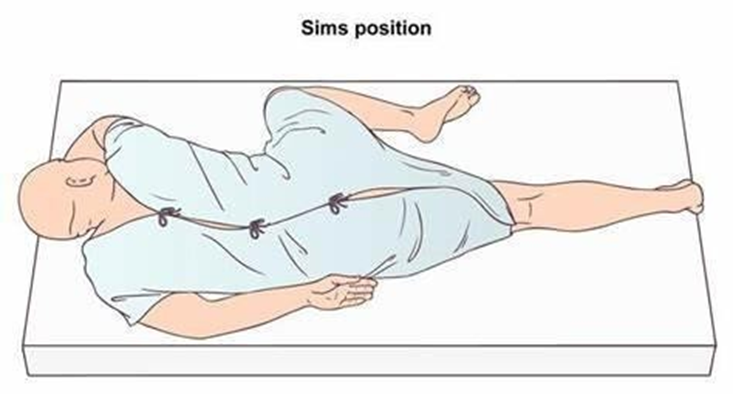The nurse is caring for a client who is having difficulty sleeping in the hospital environment. How can the nurse intervene? (SELECT ALL THAT APPLY)
Offer the client a few pieces of chocolate before bedtime.
Monitor the temperature in the client's room.
Make certain bed linens are clean and dry.
Assess the client for any issues with discomfort.
Move the client closer to the nursing station.
Correct Answer : B,C,D
B. Temperature can significantly affect sleep quality. Ensuring the room is kept at a comfortable temperature (not too hot or cold) can promote better sleep. This intervention is appropriate.
C. Clean and dry bed linens contribute to comfort, which is essential for promoting sleep. This intervention is appropriate.
D. Discomfort can be a major barrier to sleep. Addressing any discomfort, such as pain, anxiety, or positioning issues, can help improve the client's ability to fall and stay asleep. This intervention is appropriate.
A. Offering chocolate, which contains caffeine, close to bedtime is not recommended as caffeine can interfere with sleep. Therefore, this option is not appropriate.
E. Moving the client closer to the nursing station may increase noise and disrupt sleep, especially if there are frequent activities or conversations near the nursing station. Therefore, this option is not typically recommended unless the client requires closer monitoring due to medical reasons.
Nursing Test Bank
Naxlex Comprehensive Predictor Exams
Related Questions
Correct Answer is B
Explanation
B. This question is also inclusive as it does not assume the client's sexual orientation or relationship status. It allows the client to disclose their current relationship status, whether they are in a relationship with a partner of the same or different gender, or if they are single.
A. This question uses assumes the client's gender and sexual orientation.
C. This question assumes a heterosexual relationship and also implies traditional gender roles. It may not be inclusive as it assumes that the client has a wife and further stereotypes the role of a wife as a cook.
D. This question assumes a heterosexual relationship and may not be inclusive of clients who do not have husbands or who are in same-sex relationships. It also reinforces traditional gender roles by assuming that a husband is the primary breadwinner or has a defined occupation.
Correct Answer is D
Explanation
D. Before administering a cleansing enema, the client is typically instructed to assume a left-side lying position with the right knee bent. This position helps to facilitate the flow of the enema solution into the colon and allows for better retention of the solution. It also helps to prevent leakage and discomfort during the procedure.

A. Drinking water before administering an enema can help hydrate the client and promote normal bowel function. However, it is not typically a specific instruction related to the administration of the enema itself. Hydration is generally beneficial for bowel health but is not directly related to the enema procedure.
B. After administering the enema solution, the client should be instructed to hold the solution in the bowel for a sufficient amount of time to allow it to soften and loosen stool. The exact duration can vary based on the type and purpose of the enema, but typically, the client is encouraged to retain the solution for a specified period (as instructed by the healthcare provider) before evacuating.
C. This instruction is unrelated to the administration of a cleansing enema. Breathing techniques may be taught for relaxation or to manage discomfort during procedures, but they do not specifically apply to the process of administering an enema.
Whether you are a student looking to ace your exams or a practicing nurse seeking to enhance your expertise , our nursing education contents will empower you with the confidence and competence to make a difference in the lives of patients and become a respected leader in the healthcare field.
Visit Naxlex, invest in your future and unlock endless possibilities with our unparalleled nursing education contents today
Report Wrong Answer on the Current Question
Do you disagree with the answer? If yes, what is your expected answer? Explain.
Kindly be descriptive with the issue you are facing.
